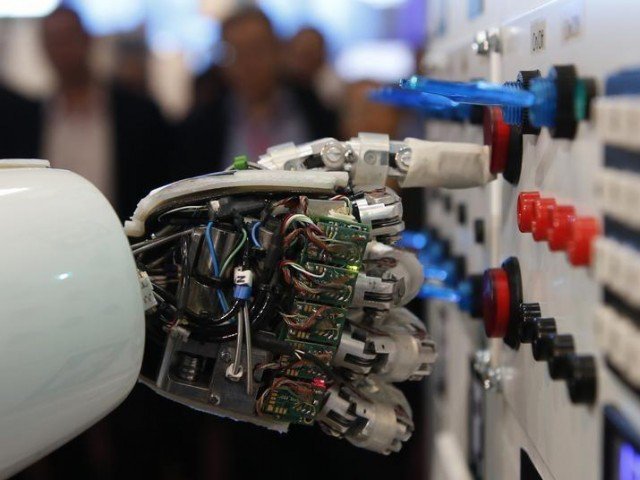
In the world of science and technology, it is being said that we are at the beginning of the fourth industrial revolution. The first brought in the age of mechanised production from iron, steel, coal and steam. The second was the result of internal combustion engine and electricity. The third was the digital revolution of information technology brought in by silicon, personal computers, cellphones and the internet. With the exponential ability to store data, the skillset required to analyse it has been left far behind.
The fourth industrial revolution has now begun. It is marked by emerging technology breakthroughs primarily in the following 10 areas, Artificial Intelligence (AI), Robotics, Internet of Things, 5G Broadband, 3D printing, Autonomous Vehicles, Cloud Computing, Blockchain like Distributed Ledgers Technology, Biotechnology and Precision Medicine, and Augmented Reality.
Klaus Schwab in his book The Fourth Industrial Revolution states that previous industrial revolutions liberated man from animal power, made mass production possible and brought digital capabilities to billions of people, but the fourth is fundamentally different. It is characterised by a range of new technologies that are fusing the physical, digital and biological worlds, impacting all disciplines, economies and industries, and even challenging ideas about what it means to be human.
Reasoning has been the biggest strength of humankind but now it can be relegated to machines. Raw, brute crunching of data was done earlier by super computers like the IBM Deep Blue that defeated Gary Kasporov in 1997. Deep Blue was tutored in the basics of chess and had in its memory the strategy employed by grandmasters in thousands of games previously played.
This year AlphaZero made by Alphabet came up with a unique Algorithm for learning of chess. It started with no knowledge of the game beyond its basic rules, but then it played against itself millions of times and learned from its mistakes. In a matter of hours, it taught itself enough to take on the biggest computational beast that exists in chess called ‘Stockfish’. The latter was doing 60 million calculations per second while AlphaZero examined only 60,000 but beat Stockfish hollow. In a nutshell this is AI and machine learning. AlphaZero thought smarter not faster.
The convergence of data with massive storage and analytical abilities when applied to available genomic and health data will be creating phenomenal change in human health. A US health service provider ‘Epic’ has health data of more than 100 million individuals. The analysis of such mega data can exponentially improve diagnostics and treatment. ReLeaSE, another algorithm-based programme, comprises two neural networks that can be thought of as a teacher and a student. The teacher neural network knows the rules behind chemical structures of about 1.7 million known biologically active molecules. By working with the teacher, the student neural network learns over time and becomes better at proposing molecules that are likely to be useful in new drugs. Combining CRISPR the gene sequencing and editing technology with AI drug development programmes, can dramatically revolutionise healthcare.
Augmented reality and virtual reality will overlay data-related information on the real world for example in surgery where layers of tissue shall not have to be dissected in search for diseased foci as the surgeon would be able to see the whole thing in 3D before dissection. Increasingly machines, for example autonomous vehicles, are making decisions with little intervention by humans. Some understanding of this new reality has enabled seven out of top 10 largest companies of 2018, Apple, Amazon, Alphabet, Microsoft, Facebook, Ali Baba and Tencents to become economic powerhouses.
The economic footprint of this emerging revolution is enormous. Augmented reality alone currently valued at $2 billion is expected to grow to $200 billion in two years. According to Gartner Inc, in 2020 AI will create 2.3 million jobs. Global business value derived from AI will increase from $692 billion in 2017 to $1.2 trillion in 2018, and it is forecast to reach $3.9 trillion by 2022. Out of this huge chunk, the Pakistani diaspora in Silicon Valley believes that if the right decisions are made, Pakistani software exports may even reach $30 billion by 2023. Optimistic it may be, but we should accept this challenge as it does not require brick and mortar investment but only intellectual upgradation of our educated youth.
Pakistan needs to be well placed for this great revolution knocking on our doorsteps. Rather than be a consumer that makes us totally dependent, we must become a player and manufacturer of the new systems ensuring phenomenal economic dividends.
There is a consensus in Pakistan that the software engineers we produce are not what the market demands. This mismatch needs to be corrected by a responsive, dynamic curriculum in our universities. For this I would be working with the vice-chancellors of the universities that come under the patronage of President as chancellor. However, for our immediate needs, as this software world is changing too fast, we have decided to top up the knowledge of existing software engineers and to train newcomers also, in a crash course for 100,000 youth this year, under the President’s Initiative on Artificial Intelligence and Computing. The programme can be viewed at www.PIAIC.org
John Dewey, the American philosopher-educationist, appropriately said, “If we teach today’s students as we taught yesterday’s, we rob them of tomorrow.” Let us give tomorrow to the Pakistani youth ‘today’.
























